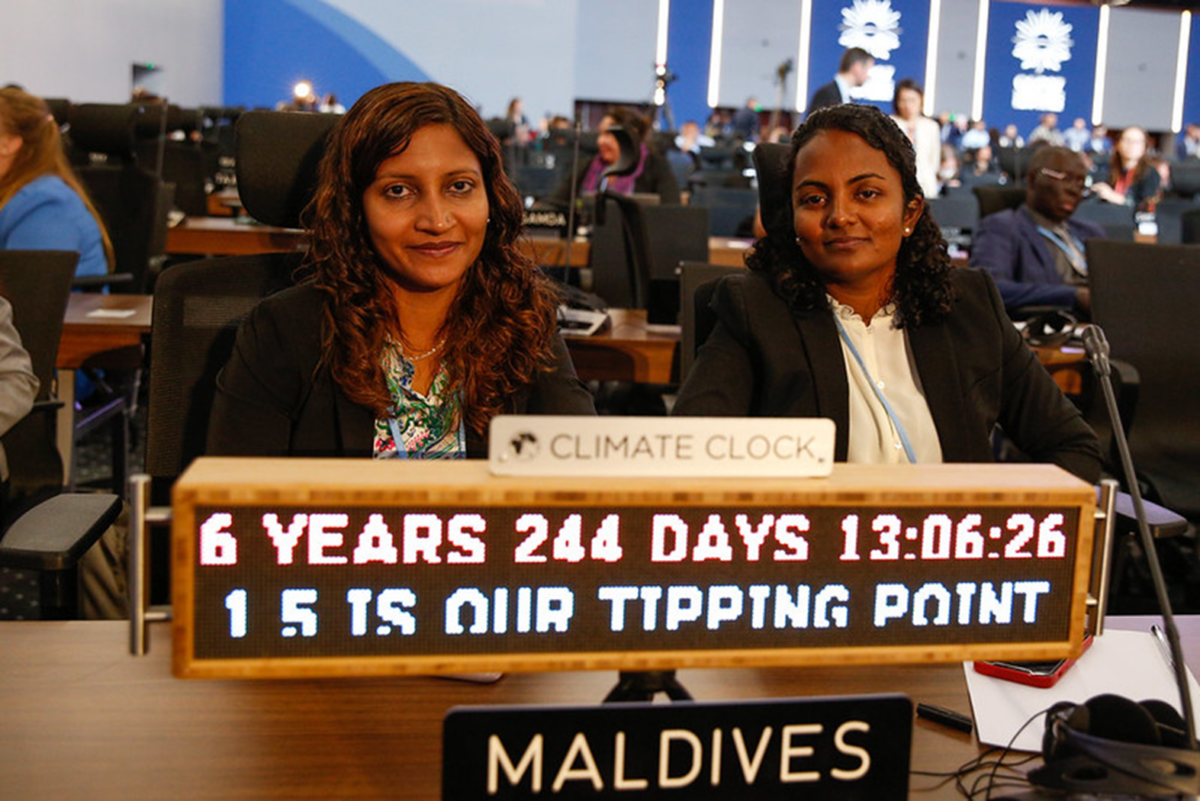By David Rossati Debt and Green Transition blog series
Several commentaries on the latest climate negotiations at the UN hailed the creation of a new international climate fund as a historic breakthrough. Unlike other climate funds, this entity will manage a new stream of funding dedicated to ‘loss and damage’ faced by vulnerable countries. Within the realm of the Paris Agreement and the UN Framework Convention on Climate Change (UNFCCC), ‘loss and damage’ loosely refers to the economic and non-economic losses faced by vulnerable countries due to extreme and slow onset events triggered by climate change, such as heatwaves or sea level rise. In other words, loss and damage is a multilateral stream of law and policy, in addition to mitigation, adaptation, and finance which deals with some crucial and unsolved tensions of the so called ‘green transition’: those between industrialized countries and historical polluters on one side, and, on the other, the most vulnerable countries suffering the most from destructive climatic events to which they have contributed little or nothing.
But what is loss and damage about? Even the Intergovernmental Panel on Climate Change in its latest full report on climate impacts found ambiguity in the definition. This makes policy action for loss and damage unclear. Yet, there is one question which the very expression ‘loss and damage’ surely entails and stands at the core of its institutional and legal development: who should pay for it and how?
The attempt in this post is not to give an answer, but to highlight two contrasting governance approaches or styles that seem to define the current responses to loss and damage payments and finance, including the new international fund as their the latest step.
- The first perceives loss and damage as a management problem which experts should define and govern (‘address’ in managerial speak).
- The second sees in it a fundamental element of justice to sustain a global transition to sustainable ways of life.
These two different approaches can affect the relations of credit and debt between the sufferers of and the main contributors to loss and damage because of their contrasting ethos and differing policy solutions. Crucially these approaches do not work in isolation. Instead, they influence together the outputs of loss and damage governance which can take many forms, including some that are not normative at a first glance, such as ‘workplans’, ‘networks’ or ‘clearing houses’ for knowledge exchange. The clear imprints of each approach are difficult to distinguish from the many outputs under the climate treaties, but can be gleaned from the inputs of the many stakeholders involved in the process. However, as the two approaches entangle, managerialism prevails, by offering only partial solutions, ‘new initiatives’ or small incremental advances, which are out of pace with the vast and pressing needs of the most vulnerable.
Managerial governance of Loss and Damage
Managerialism has reigned as the key governance style across thirty-two years of loss and damage negotiations in the climate treaties. It all started with a proposal in 1991 by small island developing states to create an international insurance pool as a ‘collective loss sharing scheme’. Today, the work on loss and damage is steered by a ‘Warsaw International Mechanism’, coordinated by an Executive Committee (ExCom), consisting of nominated government officials and experts, whose task since 2014 has been to ‘enhance knowledge of’ risk management, ‘strengthen dialogue and coordination’ among stakeholders, and ‘enhance action and support’ on finance, technology and capacity building. Throughout its ‘workplans’ the ExCom has set up expert groups and workstreams on loss and damage themes, including slow-onset events, non-economic losses, and human mobility. In parallel to this, loss and damage also branched off in a ‘Santiago Network’ for capacity building and technical assistance. So far, the ExCom’s work has mostly engaged in theme-based ‘sense-making’ and coordinating activities to understand and share information on the various types of loss and damage and how these should be dealt with according to the input of experts and global civil society organizations. This process is still ongoing and growing with a new ‘five-year rolling plan’.
This approach reflects what Isobel Roele has found about managerialism at the UN: a form of disciplinary power in the guise of technical appraisals, transparent processes of data reporting and verification, as well as the resort to policy documents and other outputs. Managerial solutions are presented as reasonable and necessary incremental advances from the status quo. However, the clear mismatch between the sluggishness of UN climate governance and the current state of the climate already gives a clue of its incompatibility with the timeframes of any a global transition compatible with a safe climate. At the same time, proposals from a climate justice perspective could speed up cooperation due to their perceived equity, but they are politically demanding, require radical changes and pose high economic burdens on the biggest polluters.
Adding to the slow incrementalism of the ExCom and its work, the dimension of loss and damage as ‘risk management’ showcases the opposing views of managerialism and justice approaches on the question of payments towards solutions and reparations.
Julia Dehm has shown how risk management in loss and damage has developed over the years by gradually shifting the narrative: vulnerable states have been made responsible of taking the necessary measures to protect their peoples, ecosystems and livelihoods by having to source the finance for solutions themselves, while the support from rich states is insufficient and geared towards creating profitable spaces for the private sector. Vulnerable states should thus carry a financial burden for dealing with climate-related disasters. An illustration of the narrative is what the World Bank proposes in a brochure showcased on the UN loss and damage website: the solution devised is to allow governments and sub-national entities to ‘access insurance markets’ via a chain of reinsurance instruments with the Bank standing as the intermediary between the bottom ‘local government units’ paying premiums and insurance companies that will eventually profit from the scheme.
Managerialism also favours a shift of responsibility for loss and damage through rather unusual governance outputs. A glaring example is the front page of the UNFCCC Fiji Clearing House for Risk Transfer website, which offers a ‘Find a Solution’ button. After clicking on it, an initiative called ‘RISK TALK’ appears: this is a community of experts connected via a private app and available to answer questions by registered users. RISK TALK was implemented by InsuResilience, a public-private partnership which aims to inspire “[…] policy and action towards strengthening resilience and protecting low-income and vulnerable populations from climate disasters’ impacts by substantially scaling up the use of climate and disaster risk finance and insurance […] solutions.” As country officials, local administrators and communities from vulnerable countries seem to be the target users, they are asked to register and make use of an app in order to access ‘cost-effective’ insurance solutions offered by development finance institutions and private insurance companies that are members of the initiative. Just the style of this initiative shows how managerialism can spin the entrance of private insurance schemes into an affair which, from justice-based perspectives, should rely on grants or other financial solutions that avoid increasing debt to de facto subsidize insurance markets.
A Climate Justice view on financing Loss and Damage
From the view of justice or equity-based approaches, loss and damage is much more than the marketization proposed by managerial styles. It should involve a full assumption of responsibility, if not even liability, from the biggest historical polluters. Thus, under the work of the ExCom, civil society organizations and researchers have been calling for complementary policies to implement alternative forms of loss and damage payments or finance. A study in 2017 assessed such policies finding that these would entrust loss and damage finance with more equitable, sustained and predictable streams. The study looked at various innovative proposal, such as a ‘financial transaction tax’, an ‘international airline passenger levy’, or a ‘fossil fuel majors carbon levy’. All the proposals pointed at global fiscal policies that source money directly from the heaviest polluters to pay for loss and damage actions, including those for risk management. These more progressive solutions which made their way to the ExCom process via a submission of information in 2016 so far have clearly not seen any follow up in later outputs or artefacts. Instead, the 2019 ‘Compendium on Comprehensive Risk Management Approaches’ of the ExCom dedicates only two pages to a section titled ‘transformational approaches’, where these more progressive fiscal initiatives could have possibly been featured.
Out of time managerialism
Unpacking the opposing dynamics of management and justice to loss and damage can help understand some key challenges for the future international loss and damage fund. Vulnerable and other developing country coalitions have battled for long time for its creation. While this vehicle will never be capable to cover the full financing and compensation for loss and damage, it can channel or experiment more equitable forms of support.
Still, managerialism seems inescapable also in this context. The latest Conference of the Parties (COP) has set up a Transitional Committee to determine the basic structure of this fund. It will be, then, again up to UN bureaucrats, state officials and experts to define its institutional governance and regulatory framework for the next COP. Only after that, the sourcing and disbursing money for loss and damage will finally follow. This reminds of the Green Climate Fund –the flagship climate fund under the UNFCCC– which was also first conceived by a COP and a Transitional Committee: it took five years from its creation to finally approve –and not even implement– the first project. This parallel tells that the slow incrementalism of managerial governance of loss and damage finance might push the whole enterprise ‘out of time’ to meaningfully fulfil the needs of those affected by destructive climate events. Yet, there is no risk management ‘workstream’ for that.
David Rossati is an Assistant Professor of Public International Law at VU Amsterdam
Image: by the author

